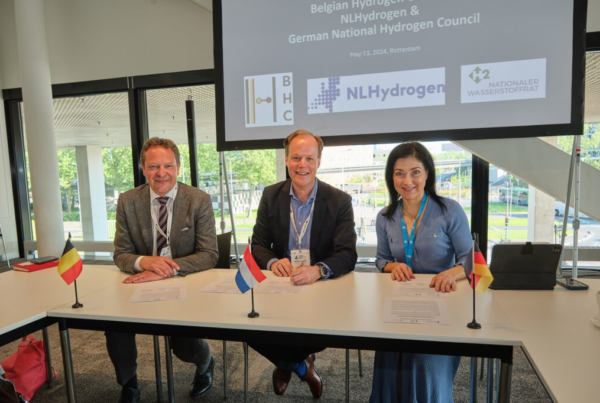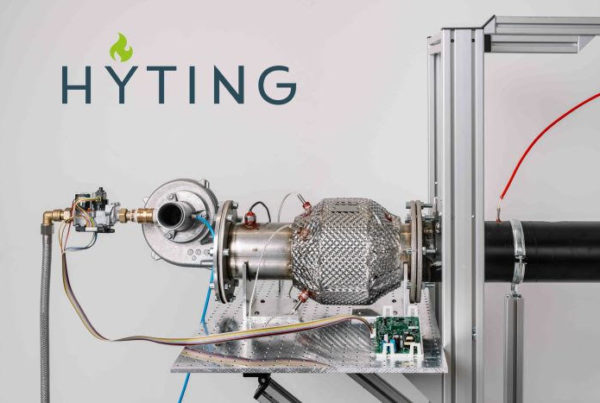
- Over 80 percent of the LNG capacities with a later option of ammonia as a hydrogen-based energy carrier marketed in the long term
- • Market test is intended to specify the need for parallel ammonia imports via an additional tank
Stade – After the commercial marketing of the Hanseatic Energy Hub has been largely completed with 10 billion m³/a of long-term booked LNG capacity, the project is continuing to support the parallel hydrogen ramp-up. The basis for this is a future-flexible modular system for the green energy transition.
The land-based terminal in Stade is planned to be ammonia-ready, both technically and commercially, and is scheduled to go into operation in 2027. At the same time, as part of the future-flexible modular system, there is the option of building an additional, smaller ammonia tank before the large tanks are converted. Since demand, schedule and design are largely dictated by market requirements, HEH will launch a market survey for ammonia as a hydrogen-based energy carrier in the coming weeks.
“Stade is flexible for the future and technically ready to accompany the hydrogen ramp-up with ammonia from the start,” explains Johann Killinger, Managing Director and co-shareholder of the Hanseatic Energy Hub. “Using the market survey, we can work with our customers to further specify requirements and schedules.”
Ammonia is already one of the most commonly produced chemicals worldwide and can be used in a wide variety of ways. After transport, it can be converted back into hydrogen or used directly as a CO2-neutral fuel. Corresponding technologies are making rapid progress. In the future, ammonia can also replace climate-damaging bunker oil as a ship fuel.
The Hanseatic Energy Hub is a future-flexible modular system for the energy transition. In a first expansion stage, LNG and green energy sources such as bio-LNG and synthetic natural gas (SNG) can be imported via the emission-free terminal from 2027. The planned regasification capacity is 13.3 billion m³/a. At the same time, the terminal, port, industrial park and connection infrastructure are designed in such a way that a conversion to ammonia as a hydrogen-based energy carrier can take place in a modular manner.
Read the most up to date Fuel Cell and Hydrogen Industry news at FuelCellsWorks




